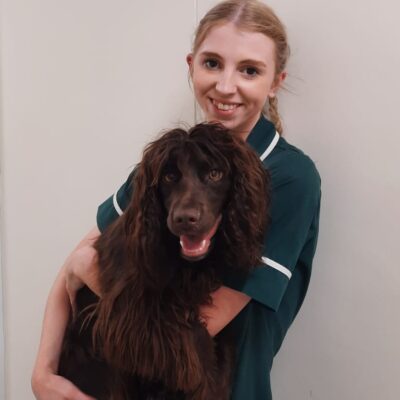Emergency? Call 01228 521 393
Orf
Orf is caused by a parapox virus. The virus multiplies in the surface layers of non-woolly skin and affects sheep of all ages. In uncomplicated cases natural recovery takes about 28 days. Severe lesions or prolonged recovery are usually due to secondary bacterial infection. There is a wide variety of strains in existence. Mortality can be up to 5% in lambs and is due to starvation because pain and distortion of the lips prevents sucking.
Orf can cause disease in man. The lesions are usually found on the hand and can be painful. They take a few weeks to heal.
Under UK weather conditions the virus is not likely to survive on pasture for more than a few months but carry-over from one year to the next in buildings and on handling equipment is highly likely. The role of carrier animals in the transmission on infection between flocks in not known with certainty.
Orf primarily affects sucking lambs, weaned lambs and ewes.
Sucking lambs develop proliferative lesions on their lips and nostrils.
Ewes develop lesions on their teats. This can lead to mastitis with the loss of half the udder or even the death of the ewe.
Strawberry Footrot’ on the lower legs of finishing lambs is another manifestation of infection; this condition is sometimes a dual infection with a type of bacteria called dermatophilus.
Orf can also cause lesions on the head and ears of rams, which is a possible means of introducing infection into a flock.
There is another peak of infection in post-weaned lambs which are introduced to coarse pasture or pastures rich in thistles (hence the alternative name ‘thistle disease’). Hawthorn hedges or gorse are also predisposing factors.
Treatment
There are a number of well-known products that are claimed to be effective in the treatment of orf. Evidence of their efficacy is lacking. Their popularity is perhaps best explained by the self-limiting nature of the disease and because natural healing tends to occur in 28 days whatever the lambs are treated with.
Attention should be directed at containing secondary bacterial infection. Crusty or scaly material must be removed in order for antibiotic sprays to penetrate the infected tissues. Of the injectable antibiotics, long-acting penicillin seem to be the most effective at controlling secondary bacterial infections.
Provide generous amounts of bedding to reduce the exposure to cast scabs.
Reduce stocking density if possible.
Feed lambs artificially if feeding is difficult for them. Remember that orf is transmissible to humans though.
Isolate infected lambs to reduce the spread of infection.
Prevention
Biosecurity. Examine incoming stock carefully, paying particular attention to ram’s heads, ears and feet. Try to buy from flocks with no history of the disease.
Vaccines offer incomplete protection and should be viewed as an aid to the control of the disease and no more. They should never be used unless a flock has previously experienced cases of the disease. The natural disease does not induce long term immunity and neither does the vaccine.
Ewes should not be vaccinated within 7 weeks of lambing. This allows time for scabs to form and fall off before the lambs are born. The scabs are infectious to the lambs so plenty of bedding should be used or the ewes should be moved to a different area to lamb.
Do not vaccinate wet animals.
Lambs can be vaccinated from any age.
The vaccine should be applied to the skin at the elbow.
Vaccinate in batches and don’t mix vaccinated and unvaccinated stock.
Vets often recommend two doses, one as young lambs, the next 6-8 weeks later or 6-8 weeks before the risk period. The vaccine can be used in the face of an outbreak to reduce the severity of the lesions and to shorten the healing period.
The scratch marks should be examined after 10 days to check the vaccine has taken.
The vaccine must be kept in a refrigerator.



